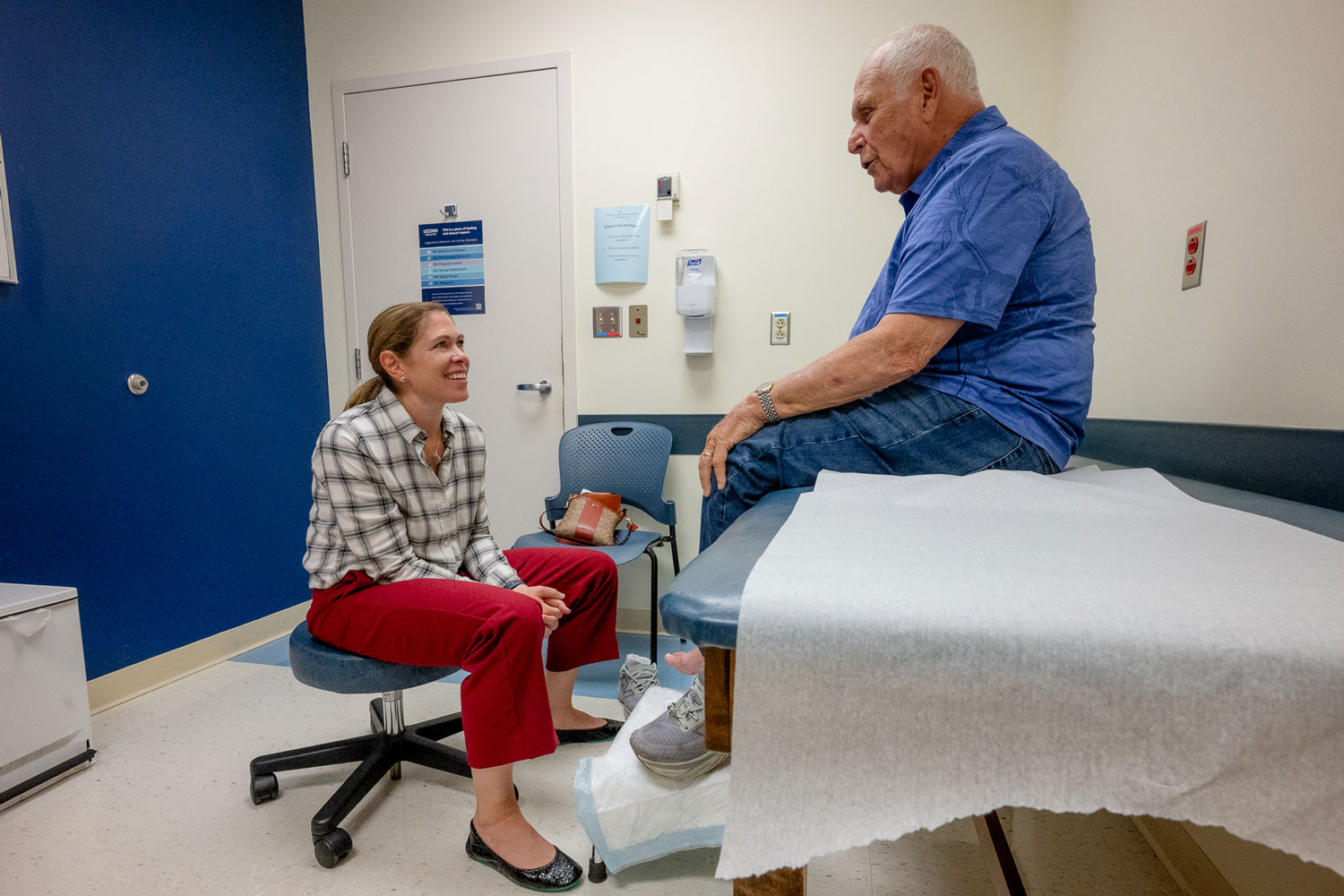
Françoise Dussart’s relationship with the indigenous Warlpiri people of Australia has changed dramatically with the passage of time. An ethnographer with decades of experience studying this nomadic people, she is now welcomed as a friend and is relied upon for her expertise in helping to bridge the differences between two dynamic and changing cultures.
Dussart, now a professor of anthropology in the College of Liberal Arts and Sciences, was raised in the Republic of Guinea, West Africa, formerly known as French Guinea, and earned a master’s degree in anthropology at the Sorbonne in Paris. She was particularly interested in studying the relationship that nomadic people have with the land, and in 1982 she began a doctoral program in anthropology at Australian National University in Canberra.
Upon arriving in Australia, she literally sat at the feet of tribal elders and listened to stories of how their lives were being affected by the advances of 20th century Western civilization.
“The Warlpiris’ egalitarian ethos has survived despite everything,” says Dussart, “so you have this constant tension. On the one hand, there’s their relationship to the land and their desire to focus on their family, including their extended family. On the other, there are the forces of Christianity that emphasize individualism, and an emerging market economy which is in complete contrast to their history as hunter/gatherers.”
First-Hand Experience

Dussart says, “I went to Australia and within three weeks I found myself completely by accident in the field. I was supposed to go to a class to get acquainted with Aboriginal languages, but it was cancelled at the last minute. It was suggested that I pay someone in one of the villages to teach me, which I did. And I didn’t leave for two years!”
As an eager young researcher, Dussart was curious about all aspects of Warlpiri history and culture. “I was young and I was really interested in the religion, the cosmology, the body painting … and so I was taken under the wings of the senior people. I just went with the flow. I was extremely lucky because the elders who talked with me had wonderful senses of humor and they were really interested in having conversations with a non-Australian. In a way, I think they were using my interest in their culture to tell their side of the story.”
The Warlpiri are an interesting topic, because Western intervention came fairly late to the tribe, and it was not until the late 19th century that their nomadic way of life as hunter-gatherers in Australia’s central desert was seriously impacted. When Dussart first made contact with them, there were elders who had been alive during the time the Australian government decided to restrict them to a permanent homeland, and who could explain in detail how divergent world views had created clashes between cultures.
Thirty years later, Dussart is still intimately involved with Warlpiri society, but now she finds herself acting as unofficial historian and sometimes spokesperson for this indigenous people. It is she who has catalogued the changes – some positive, some negative – that have affected the Warlpiri as they perform a delicate balancing act, trying to assimilate certain inevitable changes brought upon them by encroaching civilization, while still maintaining their own sense of cultural identity.
Dealing with a ‘White Man’s Disease’

In a paper titled “It is hard to be sick now: Diabetes and the Reconstruction of Indigenous Sociality” (Anthropologica, Spring 2010), Dussart details the challenges facing the Warlpiri as they deal with the ravages of diabetes, a “white man’s disease” that has become endemic among the Aboriginal population.
Whereas the health care establishment expects that the afflicted will remain in close proximity to their homes and their doctors, and will limit their travel so they can receive appropriate medical care, Dussart says, “This kind of restriction is anathema to contemporary Warlpiri people, erstwhile hunters and gatherers whose identity is still very much rooted in nomadism.”
She writes, “Field research suggests that many Aboriginal peoples, knowledgeable about the main etiological aspects of the disease, knowingly sidestep biomedical treatment protocols [such as] strict weight management, modification of dietary habit, and exercise … to accommodate their own notions of neocolonial social identity. Indeed, rather than misinterpreting etiologies and treatments, Warlpiri people tend to reinterpret the language surrounding diabetes.”
Because of her decades-long association with the Warlpiri, Dussart has earned a place of respect and trust among them. She has spent countless hours in hospitals and clinics in an effort to bridge the gap between medical staff and patients. “I’ve written manuals on how to be a patient and how to be a doctor, bilingual in English and Warlpiri,” she says, “and all the doctors and nurses want to talk to me, and the patients think it’s great; but as soon as I leave, there’s no more pressure [on either group] to reach a mutually satisfactory treatment plan.”
The Future
The Warlpiri, like other fourth world peoples such as the Maori of New Zealand, the Adivasi of India, and many of North America’s Native American tribes, are a people caught between cultures, living an existence where the old ways and the new sometimes intersect but more often co-exist in a sort of uneasy truce.
Dussart is not without hope that cultural bridges can eventually be built that will allow different visions and world views to exist in synergy. However, she says, “Those who possess the economic and political clout to bring about the sort of changes that would effectively bridge the two cultures need to feel invested enough to want this to happen. People in power need to talk with the Warlpiri, not at them.”


